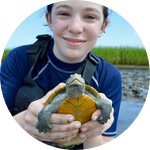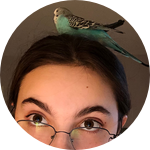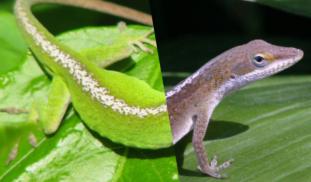Please wait...
About This Project
Green anoles (Anolis carolinensis) morphs from green to brown, and it is not known why. In this experiment, the effect of stress levels and the correlation of light levels and temperature on the frequency and duration of color change in A. carolinensis will be tested. I hypothesize that stress levels in addition to environmental conditions such as light and temperature affect color change in A. carolinensis. This research will provide insight into an unusual behavior of a common lizard.
More Lab Notes From This Project

Browse Other Projects on Experiment
Related Projects
How do polar bears stay healthy on the world's worst diet?
Polar bears survive almost entirely on seal fat. Yet unlike humans who eat high-fat diets, polar bears never...
Uncovering hidden insect diversity associated with a likely undescribed gall-forming midge
Does a likely undescribed species of gall-forming midge (pers. comm. Ray Gagné) on Eriodictyon plants (Yerba...
Macrofungi of the California archipelago
The eight islands of the California Archipelago are a well-studied biodiversity hotspot — but we know almost...





